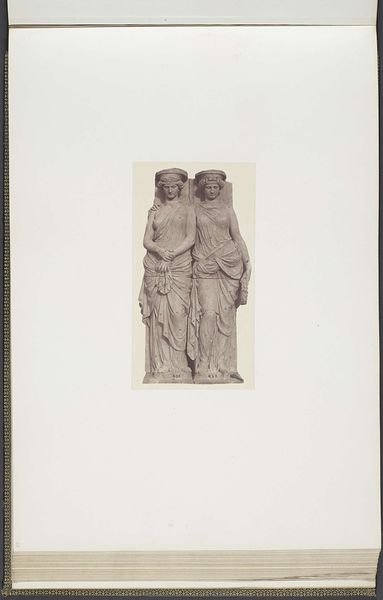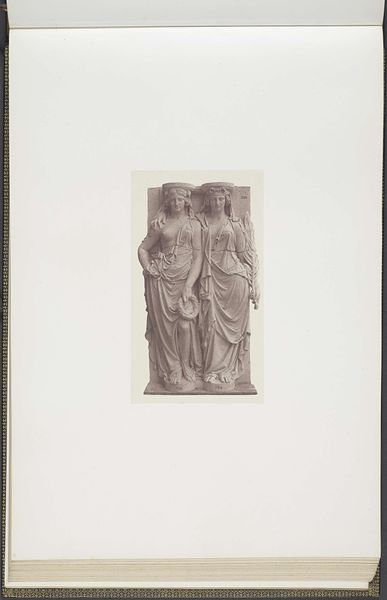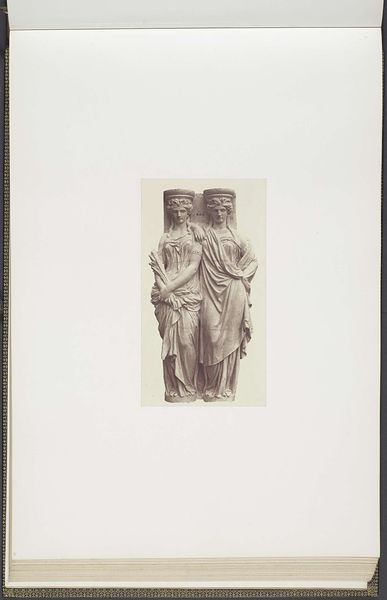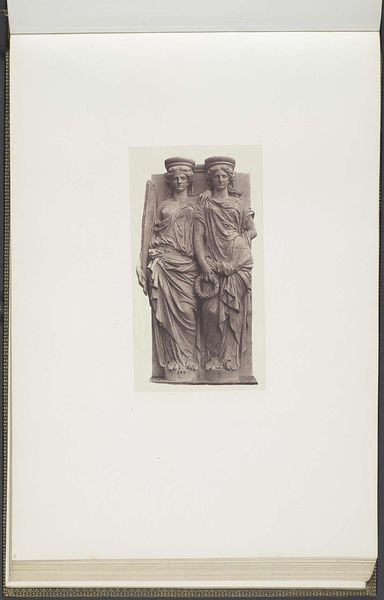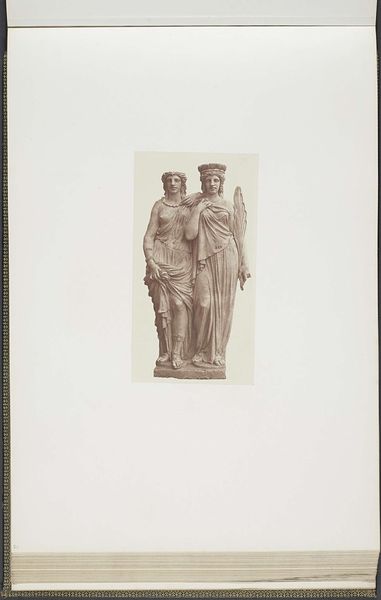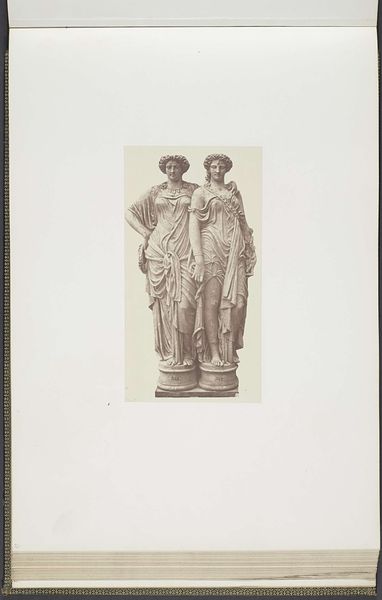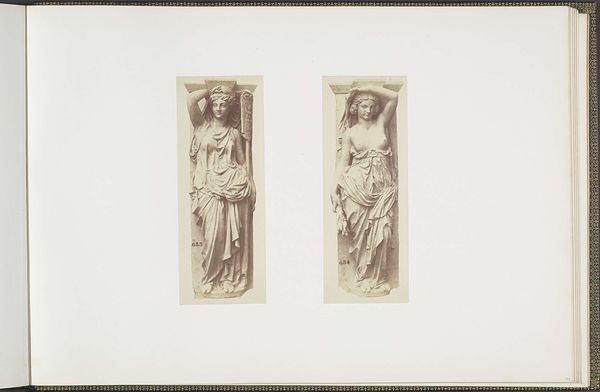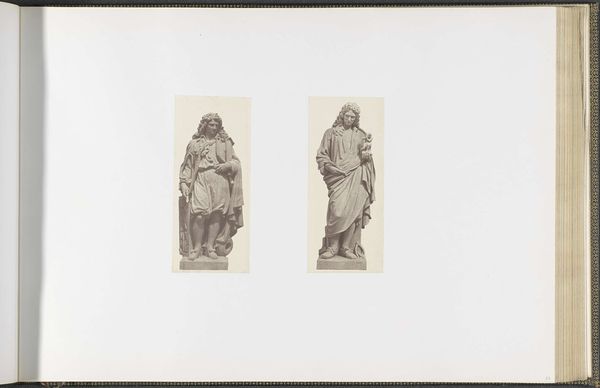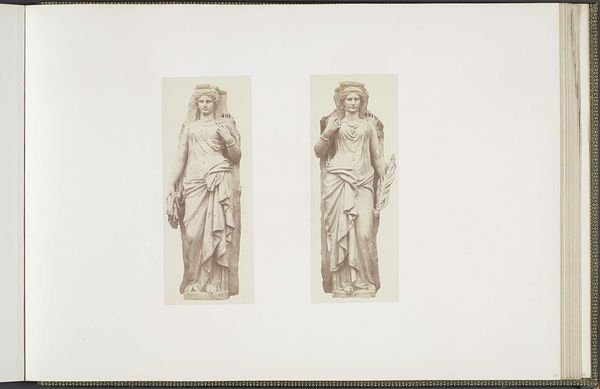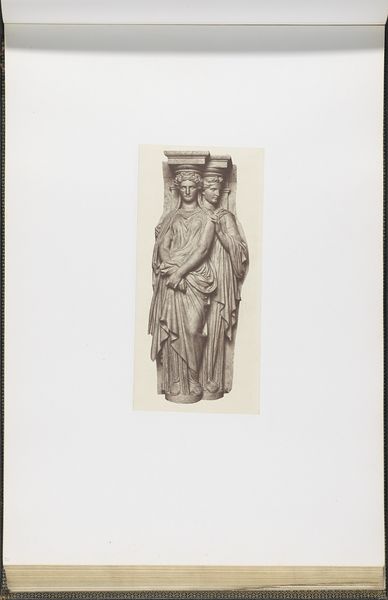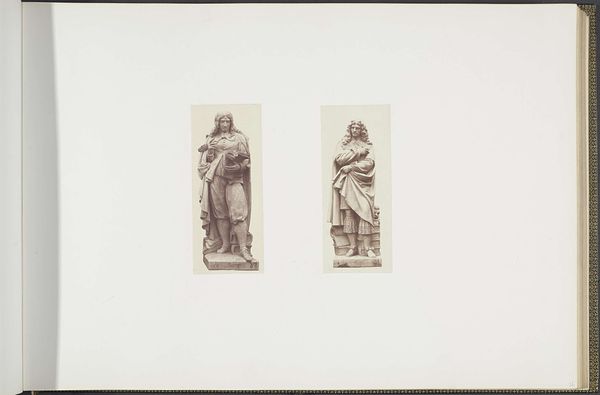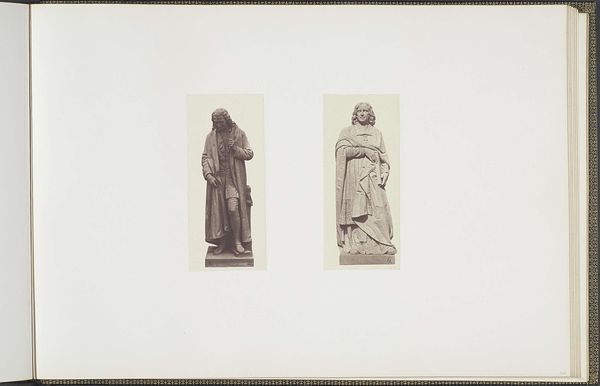
Gipsmodellen voor kariatiden op het Palais du Louvre door Auguste Ottin c. 1855 - 1857
0:00
0:00
edouardbaldus
Rijksmuseum
print, photography, sculpture
#
portrait
# print
#
photography
#
pencil drawing
#
classicism
#
sculpture
#
academic-art
Dimensions: height 382 mm, width 560 mm
Copyright: Rijks Museum: Open Domain
Curator: Here we have Edouard Baldus’ photograph of Auguste Ottin's plaster models for the caryatids at the Palais du Louvre, taken between 1855 and 1857. What's your take? Editor: The stillness is striking, isn't it? They stand like quiet sentinels, radiating a subdued sort of power and ancient dignity. And is that a photographic print? It adds an ethereal quality to something that must have been massive and quite tactile. Curator: Indeed. It’s a photographic print, rendering Ottin's sculptural studies in this fascinating light. I find myself thinking about the laborious process—the quarrying of stone, the molding of plaster, then Baldus capturing all this through the lens, itself another intricate, material process of exposure and development. Editor: You’re right to consider the labour, I think! From raw material to the finished article, destined for a building designed to flaunt power... I wonder about the artisans and labourers whose toil is hidden within that image. We only see Ottin and Baldus, the supposed 'creators'. Curator: It's compelling to view them both separately, Ottin's caryatids were destined to bear weight, part of the architectural framework. Yet here they're frozen as individual works and the print of Baldus now presents them almost divorced from that primary purpose... a weird double removal from use. Editor: Baldus seems preoccupied with light here – just look at the gradations on their robes, how that gentle illumination catches the details, but is that pencil? Curator: Yes, that's right; they seem to have touched-up with pencil drawing in addition to capturing through the photographic. A hybrid art! The rigid Classicism clashes oddly with the enhanced marks... perhaps to give greater permanence... and to emphasize the permanence of French values, or at least the appearance of it. Editor: Absolutely. The 'touching-up' gives such a valuable glimpse behind the artistic veil. By emphasizing its own artificiality it becomes almost critical of the pomp and circumstance that it initially seeks to serve. The 'imperfections' of photography improved! The imperfection almost exposes an implicit fraud. Curator: A critical rendering indeed. The image almost echoes of our present – forever wrestling to discover that point where history, representation, and labour converge and challenge our pre-conceived values. Editor: Absolutely – and I'll never look at the Louvre in the same way.
Comments
No comments
Be the first to comment and join the conversation on the ultimate creative platform.
